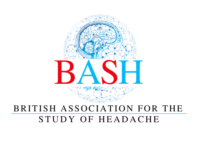Two recent papers, one in Cephalalgia and the other in Headache, tell us a lot about a little-known but increasingly recognised subgroup of Spontaneous Intracranial Hypotension - spontaneous CSF venous fistulas. Dr Paul Ballinger reflects on them.
Orthostatic headache - a tricky problem
Dealing with orthostatic headaches is one of the hardest problems in a community headache clinic. An orthostatic headache, characterised by a headache that is worse on standing and worse as the day progresses, alerts us to the possibility of a CSF leak or spontaneous intracranial hypotension (SIH). Other features, such as an occipital location of the pain, pain spreading into the shoulders, and neurological features, such as mental fogginess, tinnitus, hearing changes, and ataxia, all support the diagnosis.
The investigation of choice is an MRI scan with contrast, and if we are lucky, this might show characteristic changes of midbrain sagging, dilation of venous sinuses, dural enhancement, and other features to suggest a CSF leak. If we are luckier still, further thoracic spine imaging may show the site of any CSF leak. However, that rarely happens!
Are CSF venous fistulae more common than we think?
Recent studies have shown that a proportion of CSF leaks (estimated to be up to 30% )are not caused by a leak around the dura but, instead a CSF venous fistula (CVF). Of those patients who have MRI findings suggestive of SIH but no leak on spinal imaging three-quarters were shown to have a CSF venous fistula, which can only be shown by complex imaging procedures , such as decubitus digital subtraction myelography but not normal MRI or MRI with contrast.
About 20% of patients with SIH will have a normal MRI. In a study of patients with orthostatic headache but a normal brain MRI, 10% were shown to have a CSF venous fistula. Meningeal diverticulae, which are present in 44% of normal subjects, were always present with a CSF venous fistula(1).
The emerging evidence from one series (2) suggests that CVF presents with a different phenotype, and those patients have slightly different symptoms. Whilst they share the typical S.I.H. features of orthostatic headache and neurological features, 88 percent reported a worsening of the headache with the Valsalva manoeuvre, and 12% only had a headache with the Valsalva manoeuvre. Thus, this may be a useful diagnostic feature in the presence of an orthostatic headache. Unsurprisingly , in this series, some cases were initially misdiagnosed as cough headache and others as a Chiari malformation.
How helpful is blood patching in these cases?
The response to blood patching does not seem as good in the CVF group. In the same series, 57% had a poor response, and only 10% had a good response at 3 months. Conversely surgical correction of the fistula produced an improvement of 50% or more, in 75% of patients, and complete resolution in half of all patients. A poor response to surgery correlated with non-resolution of the imaging findings.
It's good to know the mysteries of SIH are being unravelled. Getting the right type of imaging to make the diagnosis will be much harder!
1.Schievink, W. I., Maya, M., Prasad, R. S., Wadhwa, V. S., Cruz, R. B., Moser, F. G., & Nuno, M. (2021). Spontaneous spinal cerebrospinal fluid-venous fistulas in patients with orthostatic headaches and normal conventional brain and spine imaging. Headache: The Journal of Head and Face Pain, 61(2), 387-391. https://doi.org/10.1111/head.14048
2. Duvall JR, Robertson CE, Cutsforth-Gregory JK, Carr CM, Atkinson JL, Garza I. Headache due to spontaneous spinal cerebrospinal fluid leak secondary to cerebrospinal fluid-venous fistula: Case series. Cephalalgia. 2019;39(14):1847-1854. doi:10.1177/0333102419881673

Dr Paul Ballinger
GPWSI Headache
Cannock Headache Service , Colliery Practice , Cannock WS11 1DJ
(Paul is one of our GPwER in Headache members. To find out how to explore our GP area and/or join this group, click here)
To view the recent Multidisciplinary consensus guideline for the diagnosis and management of spontaneous intracranial hypotension, click here




